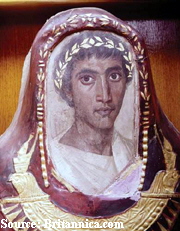Carl Jung Resources > DReam Interpretation > Articles
Jung and Artemidorus
Thus, if for example we dream the image of a house with several floors, Freud's interpretation will be based on the dreamer's associations connected precisely to the house itself, while for Jung the same house can evoke the spatial structure of the psyche (soul) with different compartments representing different personality areas or specific interests.(3) The question is if Jung took over the idea of dream symbol from Artemidorus and adapted it to the interest of his psychology. It's obvious that Jung cannot overlook Artemidorus book about dreams - so, was he inspired by him? It must be said that for Jung the dream has no prophetic implicit qualities, such as for Artemidorus, but it refers to a personal development called individuation process. Following this process the individual ego engaged in it is confronted with the collective unconscious and he has to assimilate its contents, more precisely new ideas and concepts which extends and compensates its one-sidedness. By gradually assimilating these contents the ego refocuses as towards inner and outer reality. It becomes complete, plenary; a phenomenon described through the alchemical term of conjunction of opposites. Dreams' interpretation becomes an essential work instrument for going through this process because the dream is the messenger of the unconscious or of the archetype of psychical totality. It offers precious indications regarding the assimilation of the unconscious. In this context Jung's approach cannot be compared with Artemidorus'. It is an approach related to a certain philosophy or mystic of the soul, which has nothing in common with the antique idea of dream prophecy. We would have to add that the dream symbol for Jung does not send to exterior objects or situations - the beloved woman, the desire to travel, the fear of a person etc. - as it is the case for Artemidorus, but to inner processes. Still, it is not sure that Jung's centering on the integration of the individuation process while working with dreams means that he was not influenced by Artemidorus theories.
Notes: 2. Regarding the subject-object level see our article on dreams here.
3. A comparison between both interpretation methods was published in our Dream Interpretation Methods email course. |
© Copyright AROPA, 2025.
